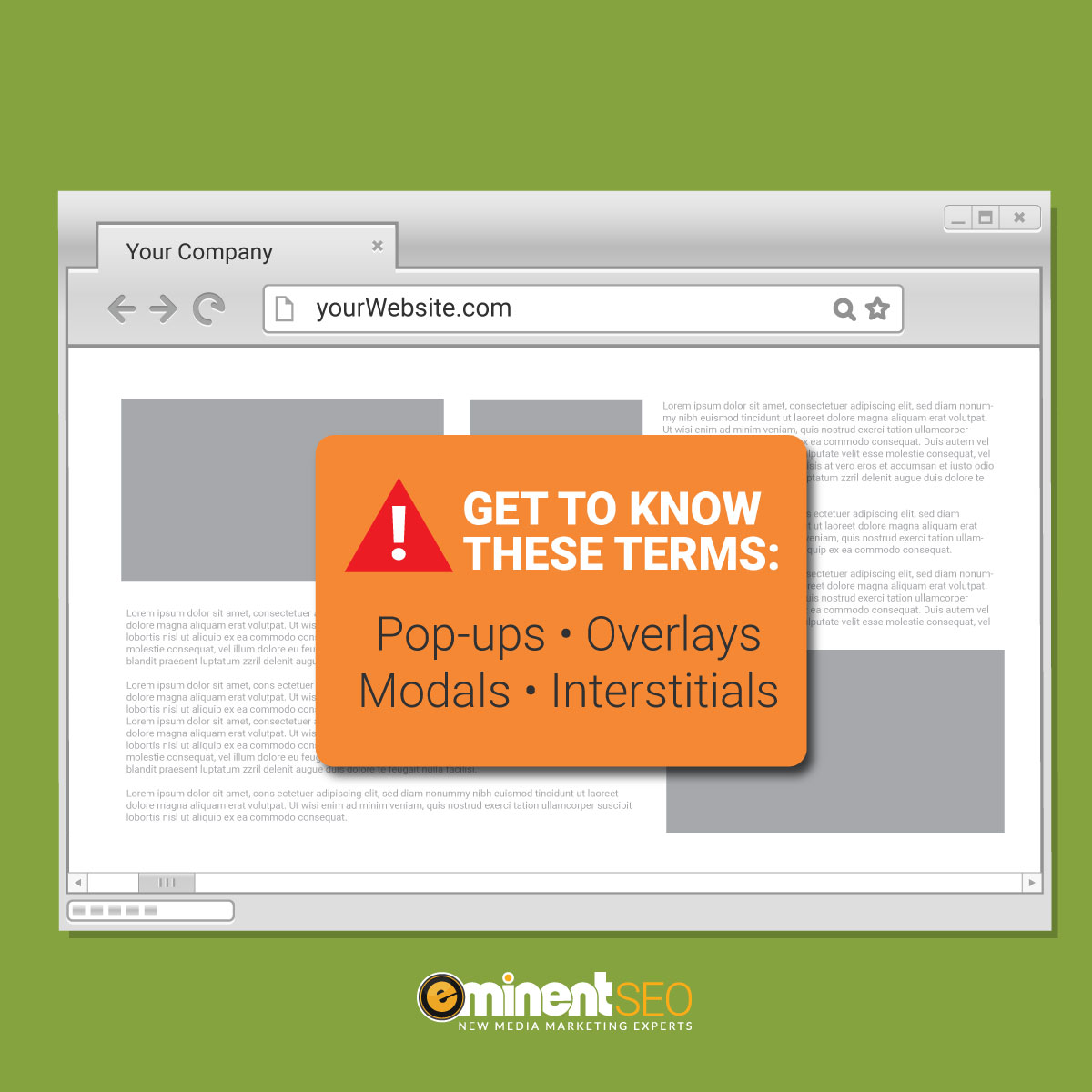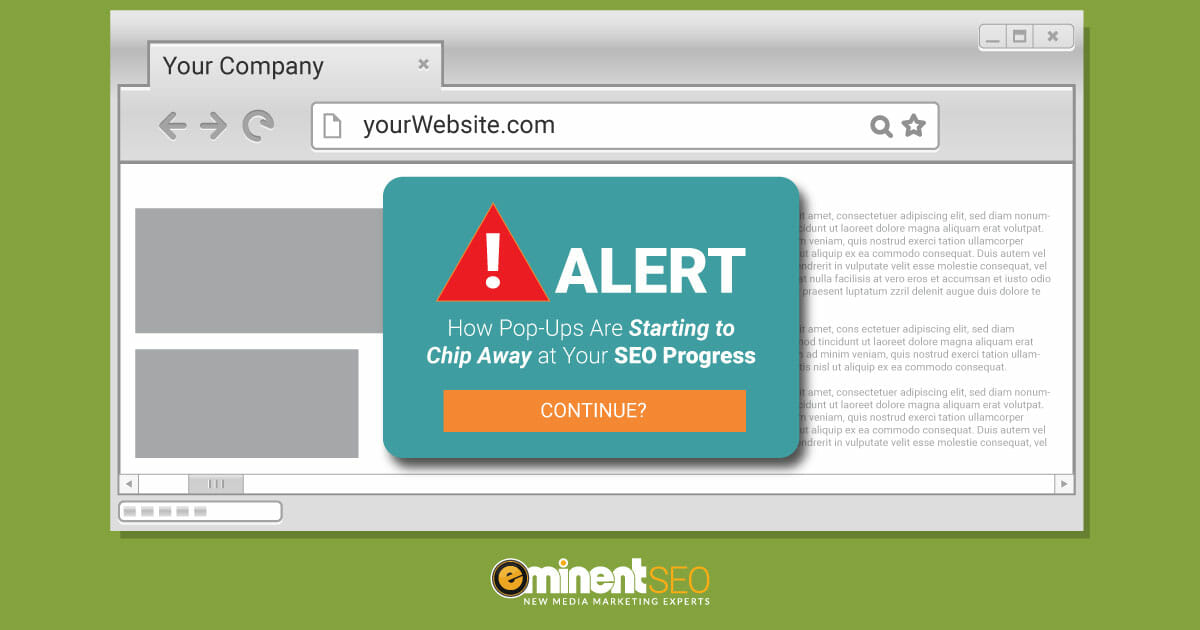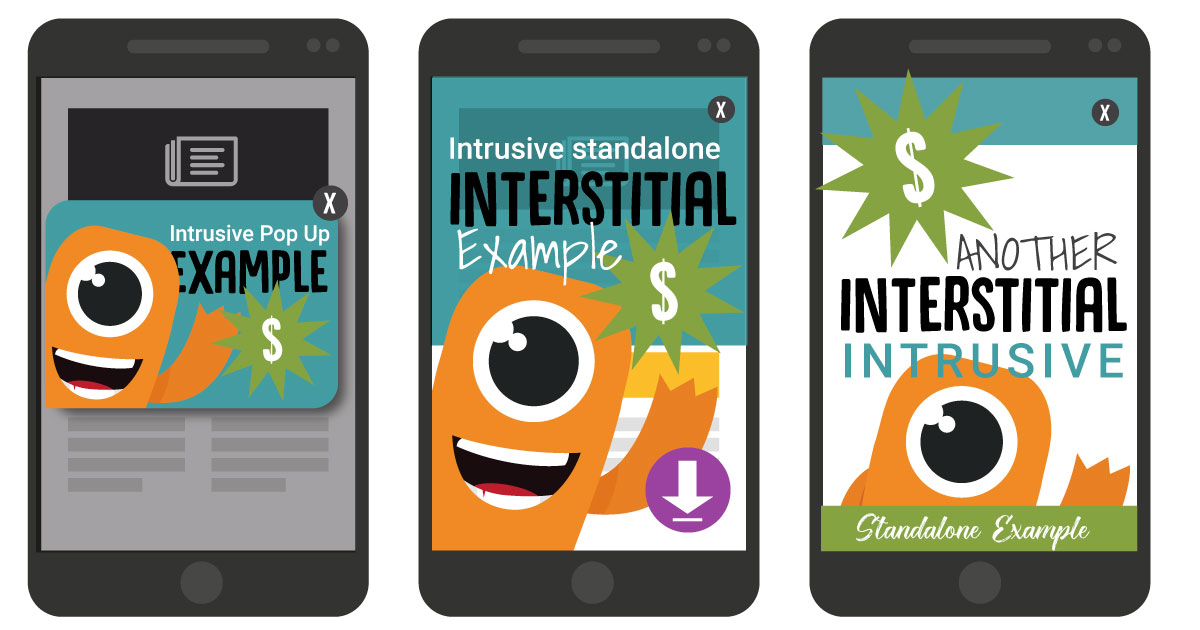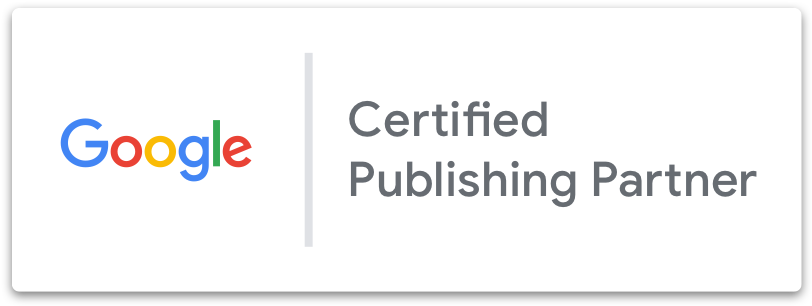Advertising, especially pop-up based advertising, can have a significant impact on a website’s SEO. Understanding the relationship between pop-ups and SEO requires examining a website’s user experience (UX) and how Google assesses it.
Google concerns itself with leading its faithful masses to helpful, UX-rich websites. If a webpage signals to Google that the user experience is poor, often in the form of a quickly clicked back button, the search engine responds by demoting the page’s ranking – or penalizing it.
Understanding Pop-Ups, UX and SEO
Pop-ups can be a mighty motivator for those immediate departures. Understanding how pop-ups directly impact the UX – and thus the SEO – requires a dose of technical jargon.
Continue reading to explore the four different types of pop-ups and how they may be slowly chipping away at your website’s SEO progress.
The Classic: New Window Pop-Up

- First, new window pop-ups detract from the website’s overall UX by inspiring more ire than engagement.
- Second, most browsers automatically suppress this kind of interaction and block pop-ups. If the browser doesn’t silence the pop-up, users will actively seek out ways to prevent this interaction from occurring again. AdBlock is a popular plug-in available for web browsers, as it boasts more than 40 million users and 200 million downloads. That’s 40 million people saying, “We don’t want this kind of interaction when visiting a website.”
Users don’t like them. Google doesn’t like them. It’s possible to work around Google’s guidelines and suppress the result for users arriving from the search engine results page (SERP), but the damage it does to the overall UX makes this type of pop-up a poor choice.
Overlays: Visual Elements
Overlay pop-ups incur far fewer penalties from search engines. This type of pop-up usually takes the form of a subscription request (such as “join our mailing list”) and appears as a new box within the same window.
Whether Google penalizes the page’s ranking depends largely on the intrusiveness of the overlay. If the overlay prevents the user from viewing the content, particularly on mobile pages, Google may reduce the ranking or remove mobile tags. Losing mobile tags in Google SERPs can greatly diminish the level of organic traffic a webpage receives and render its SEO ineffective.
Modals: Interactive Pop-Ups
Modals are pop-ups that often resemble sign-in forms and directly impact the user experience of a website. Modals form a new box outside of the page’s core content, but prevent interaction with the content until the modal has been dismissed or completed, similar to overlays.
Whether a modal is penalized by Google depends on the type of interaction it provides. Generally, any legal requirements (such as accepting a site’s cookie use or asking if the visitor is at least 21 years old) won’t incur penalties from Google.
Advertisement modals face a trickier battle against Google’s algorithms. Modals that provide an element of UX (such as opening a larger version of an image) and allow the user to interact with the page in a desirable or legal way are unlikely to be penalized. Pages that are penalized for having an advertising pop-up modal become problems the website owner must evaluate.
Does the website gain enough email addresses or subscriptions through the modal to justify the SEO penalty? If so, then it may be beneficial to continue using it, but keep a close eye on Google’s policy updates. If past algorithm trends are any indication of future changes, the SEO penalty may very well increase and incrementally cancel out any current benefits.
Interstitials: Interludes Before Content
The final kind of pop-up happens prior to the user reaching the page. Forbes and other websites that require users to disable their ad-blocking functions are classic examples of interstitial use.
Google’s response to interstitials follows the same logic applied to overlays and modals: If it’s intrusive and detracts from the UX, the SEO on the page will likely face penalties. Google updated its stance on these pop-ups in January 2017 to include harsher penalties for intrusive interstitials that appear fresh from a SERP click-through.
That decision is a direct reflection of Google’s UX principles, as intrusive interstitials often prompt an immediate back button click by users. If enough users arrive and then immediately flee from a webpage, Google knows to push the entry down. If people don’t want to see it, search engines don’t want to show it.
It’s worth noting that these penalties are limited to the first page users reach from a SERP. Interstitials that occur after a click path or when transitioning to another page do not suffer SEO penalties, although they may still detract from the overall UX.
See the image below for a visual representation of an overlay pop-up and interstitials:
Making Website Pop-Ups Count
If a website relies on its pop-ups to generate income or subscribers, there are some crafty methods to enrich the user experience with pop-ups rather than detract from it.
Consider these guidelines for meaningful pop-up use without damaging SEO:
- Make the pop-up as nonintrusive as possible.
- Time the pop-ups so that they do not prevent immediate content access.
- If the pop-up interferes with mobile viewing, consider suppressing it for mobile visitors.
- Provide an easy-to-identify and useful dismissal function for the pop-up.
- The more original the pop-up element, the more engaging it is. (Be sure that the novelty doesn’t translate into frustration for users.)
- If possible, make the pop-up meaningful and directly related to the content of the page.
- Design the website with UX as one of the top priorities. Conversions will naturally follow.
Preparing for the Future of SEO
Google continues to tighten its SEO guidelines, so publishers may find themselves overwhelmed with keeping up. But when you work with Eminent SEO, you don’t have to be one of them. Our team stays on top of search engine policies and best practices in order to update the content and user experience for our clients’ visitors accordingly.
Whether you need help designing a new website or would like a strategic refresh of your existing content, contact Eminent SEO today.
Otherwise, please answer the following question in the comment section below: Have you come across any pop-ups that you found valuable and enhanced your experience on the website you were visiting?




Thanks for the interesting article. Are you seeing different outcomes based on different industries with popups? Like eCommerce sites for a local service for example. In terms of your question, on eCommerce sites, visitors that want to give their name and email for a discount coupon or exclusive deals does not appear to be an issue.
Thanks for your input, Steve. From all that we’ve read on the topic, pop-ups may not be penalized by Google for one industry as they would for another. It all depends on the purpose of the pop-up. If it’s non-intrusive, easily dismissible, and relevant to the page the user intends to read, then it shouldn’t bring the website any penalties. The most common example we’ve seen is alcohol sites that ask for the user’s age via pop-up before allowing access to the website. Thanks for reading!
Thanks for sharing this great article Steve.
But, I’m curious if you can come up with a situation where having a lot of pop ups is justifiable?
Kind regards,
Filip
We’ll see if Steve has any answer to this, but it’s hard to imagine a scenario where multiple pop-ups helps your site. Even if Google doesn’t demote your site because of that, it will likely turn off real users. Maybe if the pop-ups involved video or something interactive it might work, but it’s hard to tell.